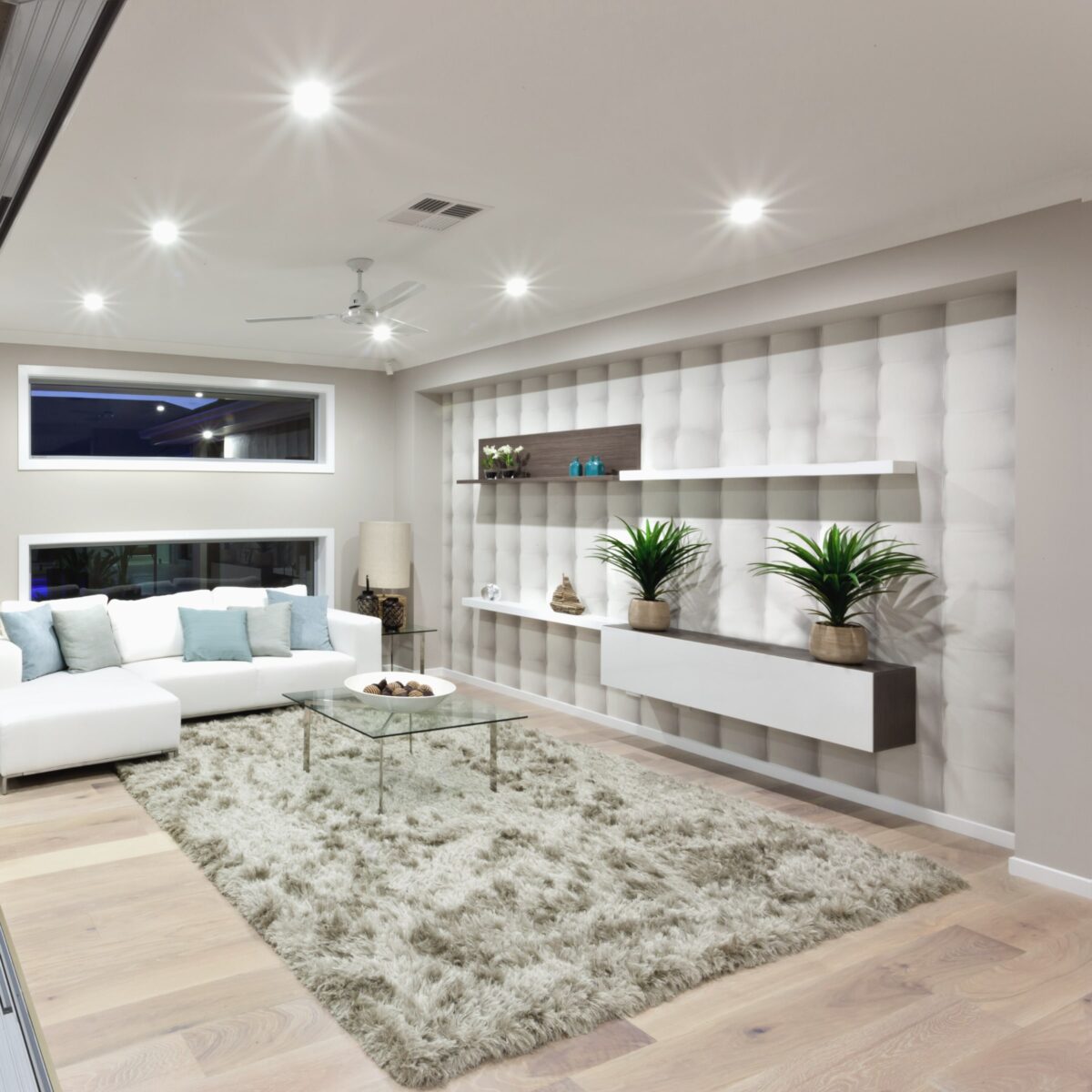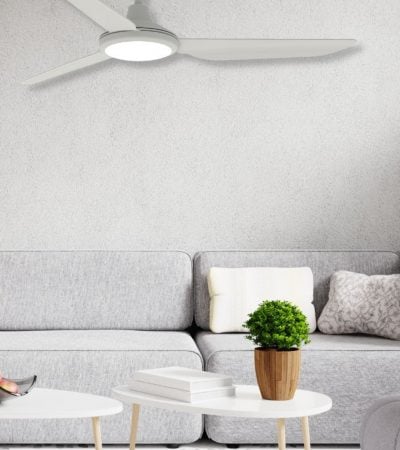
Shop the best price on ceiling fans with our lowest fan price guarantee!
Shop the best price on ceiling fans with our lowest fan price guarantee!
To NSW, ACT & VIC, and metro QLD & SA*
If you find a lower price, we’ll match it!
Sign up for exclusive VIP discounts all year round!
LED lighting, or Light Emitting Diode lighting, is a newer and more energy-efficient alternative to traditional lighting options such as incandescent and fluorescent bulbs. The benefits of LED lighting are numerous and include cost savings, environmental impact, durability, and versatility. In this article, we will explore these benefits in-depth and explain why you should make the switch to LED lighting in your home or business.
LED lighting is a type of solid-state lighting that uses semiconductor technology to convert electrical energy into light. Unlike traditional lighting options, LED lights do not have a filament or gas that can burn out or wear down over time. Instead, they use a small chip that emits light when an electric current is applied. This chip is encased in a durable material, such as plastic or glass, to protect it and enhance its light output.
LED lighting technology has come a long way in recent years, and LED lights are now available in a wide variety of shapes, sizes, and colours. They are also becoming more affordable, making them a cost-effective option for both residential and commercial use.

Energy-efficient lighting has become increasingly important with the growing concern over climate change and the need to reduce our carbon footprint. This lighting option not only reduces energy consumption and costs but also helps to reduce greenhouse gas emissions and overall environmental impact.
Additionally, in most countries, governments have implemented regulations and policies to promote energy-efficient lighting and reduce the use of traditional lighting options, which are less energy-efficient and can harm the environment.
LED lighting is one of the most energy-efficient lighting options available. It uses significantly less energy than traditional lighting options, making it a great choice for anyone looking to reduce their energy consumption and costs. Additionally, LED lights have a longer lifespan, which means they need to be replaced less often, further contributing to a greener future.
One of the most significant benefits of LED lighting is the potential for energy savings. LED lights use significantly less energy than traditional lighting options, which can lead to significant cost savings on energy bills.
In this section, we will take a closer look at the energy savings that can be achieved by switching to LED lighting and compare it with traditional lighting options.
LED lights are significantly more energy-efficient than traditional lighting options. They use about 75% less energy than incandescent bulbs and about 50% less energy than fluorescent bulbs. By switching to LED lighting, you can significantly reduce your energy consumption and costs.
For example, a 60-watt incandescent bulb produces the same amount of light as a 15-watt LED bulb. This means that replacing ten incandescent bulbs with LED bulbs would reduce your energy consumption by 450 watts, or about 0.45 kilowatts.
The energy savings achieved by switching to LED lighting can lead to significant cost savings on energy bills. The exact cost savings will depend on the number of lights you have, how often you use them, and the cost of electricity in your area.
For example, if you have ten incandescent bulbs that you use for an average of 3 hours per day, and the cost of electricity is $0.10 per kilowatt-hour, you would save about $16 per year by switching to LED bulbs. If you have 100 incandescent bulbs, the savings would be about $160 per year.
Additionally, LED lights have a longer lifespan than traditional lighting options, which means they need to be replaced less often. This can lead to further cost savings as you will not have to replace the bulbs as frequently.
It’s worth noting that although the initial cost of LED lights is higher than traditional lighting options, the long-term cost savings achieved through energy savings and reduced maintenance can make up for the initial cost in a short time.

Another major benefit of LED lighting is its positive impact on the environment. LED lights use significantly less energy than traditional lighting options, which leads to reduced greenhouse gas emissions and overall environmental impact.
Additionally, LED lights contain fewer toxic materials than traditional lighting options, making them more sustainable. In this section, we will take a closer look at the environmental impact of LED lighting and compare it with traditional lighting options.
Greenhouse gases, such as carbon dioxide and methane, are released into the atmosphere when fossil fuels, such as coal and natural gas, are burned to generate electricity. LED lights use significantly less energy than traditional lighting options, which leads to reduced greenhouse gas emissions.
By using less energy, LED lights help to reduce the amount of greenhouse gases released into the atmosphere, which can help to mitigate the effects of climate change.
For example, if you replace ten incandescent bulbs with LED bulbs, you would reduce your carbon footprint by about 0.45 kilograms of carbon dioxide per year. If you replace 100 incandescent bulbs, the reduction in carbon footprint would be about 4.5 kilograms of carbon dioxide per year.
Fluorescent bulbs, including compact fluorescent lamps (CFLs), contain small amounts of mercury, a toxic substance that can negatively affect human health and the environment. If a fluorescent bulb breaks or is disposed of improperly, the mercury can be released into the environment, potentially contaminating soil and water.
On the other hand, LED lights do not contain mercury, making them a safer and more sustainable choice for the environment. This also makes them safer for people to handle and dispose of.
The environmental impact of LED lighting is positive and significant. LED lights use significantly less energy than traditional lighting options, which leads to reduced greenhouse gas emissions and overall environmental impact. Additionally, LED lights contain less toxic materials than traditional lighting options, which makes them a more sustainable choice for the environment.
LED lights are known for their durability and long lifespan, making them a great choice for residential and commercial use. LED lights do not have a filament or gas that can burn out or wear down over time. Hence, they can last significantly longer than traditional lighting options.
In this section, we will take a closer look at the durability and longevity of LED lighting and how it compares to traditional lighting options.
LED lights have a much longer lifespan than traditional lighting options. They can last up to 50,000 hours or more, while incandescent bulbs typically last only 1,000 hours, and fluorescent bulbs last about 10,000 hours. This means you can use an LED light for up to 50 times longer than an incandescent bulb or five times longer than a fluorescent bulb before needing to replace it.
For example, if you have ten incandescent bulbs that you use for an average of 3 hours per day, you will need to replace them about every 3.5 years. If you replace those with LED bulbs, you will not need to replace them for about 17.5 years.
The longer lifespan of LED lights also means they need to be replaced less often, which can lead to significant cost savings on maintenance. Additionally, LED lights do not contain any moving parts, making them less likely to break or malfunction. This makes them a more reliable and cost-effective choice for both residential and commercial use.
LED lights are known for their durability and long lifespan. They do not have a filament or gas that can burn out or wear down over time so they can last significantly longer than traditional lighting options. The longer lifespan of LED lights also means they need to be replaced less often, which can lead to significant cost savings on maintenance.

LED lights are known for their versatility and flexibility, which makes them a great choice for a wide range of settings and applications. LED lights come in various shapes, sizes, and colors and can be used for indoor and outdoor lighting. In this section, we will take a closer look at the versatility and flexibility of LED lighting and how it compares to traditional lighting options.
LED lights come in a wide range of colours, making them a versatile option for different lighting applications. They can be used to create different moods and ambiances in different settings, such as warm white for a cosy atmosphere in a living room or cool white for a bright and invigorating atmosphere in a kitchen. Additionally, RGB (red, green, blue) LED lights can create a full spectrum of colours, making them suitable for creating dynamic lighting effects and accent lighting in commercial and entertainment spaces.
Many LED lights are dimmable, which means you can adjust the brightness to suit your needs. Dimmable LED lights can be used to create different ambiances and moods in different settings, such as creating a warm and cosy atmosphere in a living room or a bright and invigorating atmosphere in a kitchen.
Additionally, dimmable LED lights can save energy, as you can adjust the brightness to suit your needs and reduce energy consumption.
LED lights are extremely versatile and can be used in a wide range of settings and applications. They can be used for indoor and outdoor lighting in different settings such as homes, offices, retail spaces, and more. LED lights can also be used for different types of applications such as task, accents, and general lighting.
LED lights are known for their versatility and flexibility. They come in a wide range of colours and can be used to create different moods and ambiances in different settings. Additionally, many LED lights are dimmable, which allows for adjusting the brightness to suit the needs. LED lights are also suitable for a wide range of settings and applications, making them a great choice for residential and commercial use.

LED lighting is a cost-effective, energy-efficient, and environmentally friendly alternative to traditional lighting. The benefits of LED lighting include cost savings, environmental impact, durability, and versatility.
The benefits of LED lighting are numerous and far-reaching, making them a great choice for anyone looking to reduce their energy consumption and costs while reducing their impact on the environment. Additionally, LED lights’ durability, longevity, and versatility make them a cost-effective and reliable choice for both residential and commercial use. With so many benefits, it’s easy to see why switching to LED lighting is a smart decision. If you need help choosing or installing LED lighting in your premises, talk to the experts at Rovert. With years of experience in the lighting industry and the largest range of options, Rovert are your go-to supplier of everything LED lighting. Contact them today on 02 4952 5600 or enquire online.
Become a Rovert VIP to unlock exclusive savings & offers!
Shop VIP prices
PLUS save $10 on your first
online order over $100!
